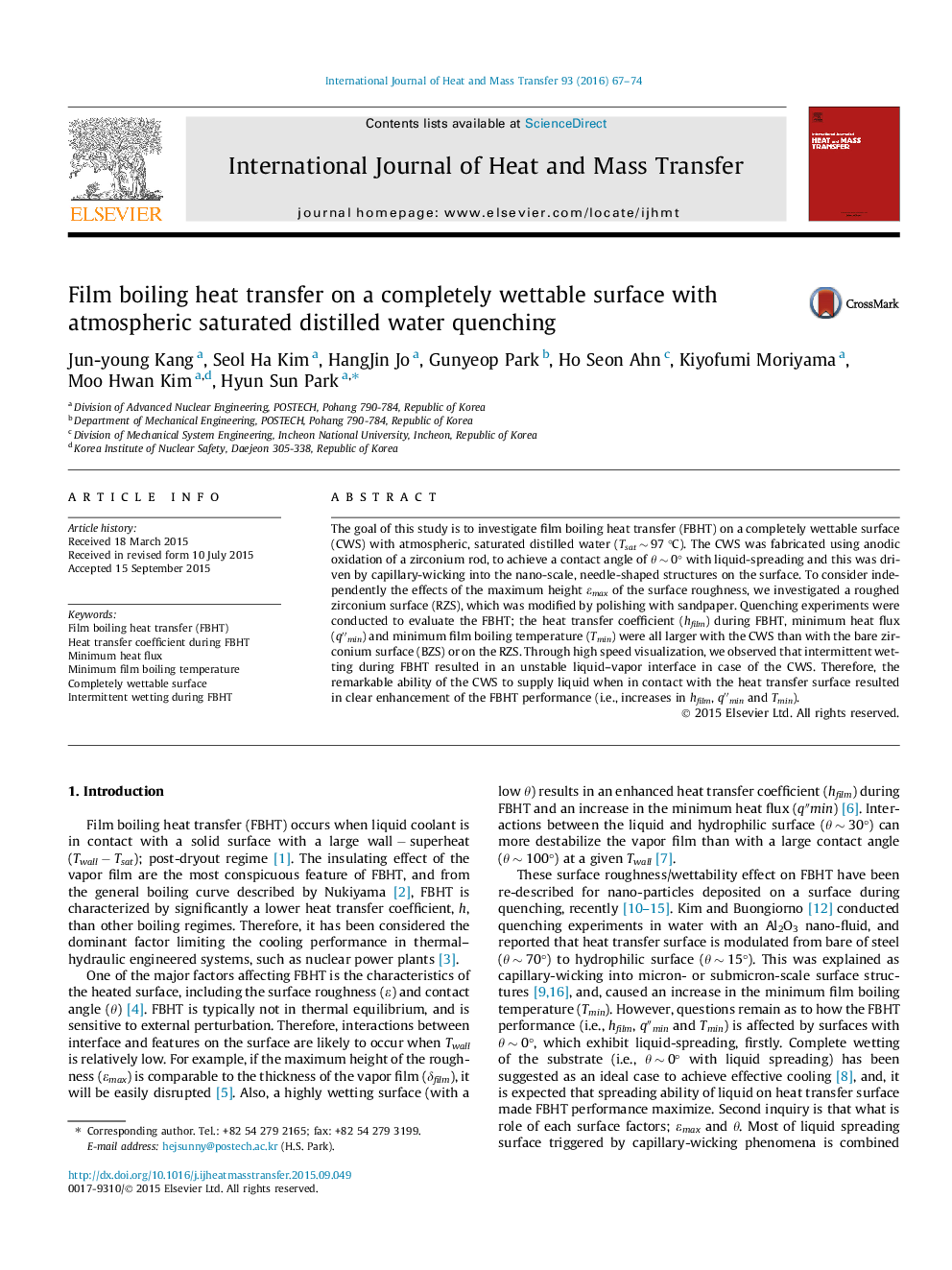| Article ID | Journal | Published Year | Pages | File Type |
|---|---|---|---|---|
| 7056004 | International Journal of Heat and Mass Transfer | 2016 | 8 Pages |
Abstract
The goal of this study is to investigate film boiling heat transfer (FBHT) on a completely wettable surface (CWS) with atmospheric, saturated distilled water (Tsat â¼Â 97 °C). The CWS was fabricated using anodic oxidation of a zirconium rod, to achieve a contact angle of θ â¼Â 0° with liquid-spreading and this was driven by capillary-wicking into the nano-scale, needle-shaped structures on the surface. To consider independently the effects of the maximum height εmax of the surface roughness, we investigated a roughed zirconium surface (RZS), which was modified by polishing with sandpaper. Quenching experiments were conducted to evaluate the FBHT; the heat transfer coefficient (hfilm) during FBHT, minimum heat flux (qâ³min) and minimum film boiling temperature (Tmin) were all larger with the CWS than with the bare zirconium surface (BZS) or on the RZS. Through high speed visualization, we observed that intermittent wetting during FBHT resulted in an unstable liquid-vapor interface in case of the CWS. Therefore, the remarkable ability of the CWS to supply liquid when in contact with the heat transfer surface resulted in clear enhancement of the FBHT performance (i.e., increases in hfilm, qâ³min and Tmin).
Keywords
Related Topics
Physical Sciences and Engineering
Chemical Engineering
Fluid Flow and Transfer Processes
Authors
Jun-young Kang, Seol Ha Kim, HangJin Jo, Gunyeop Park, Ho Seon Ahn, Kiyofumi Moriyama, Moo Hwan Kim, Hyun Sun Park,
